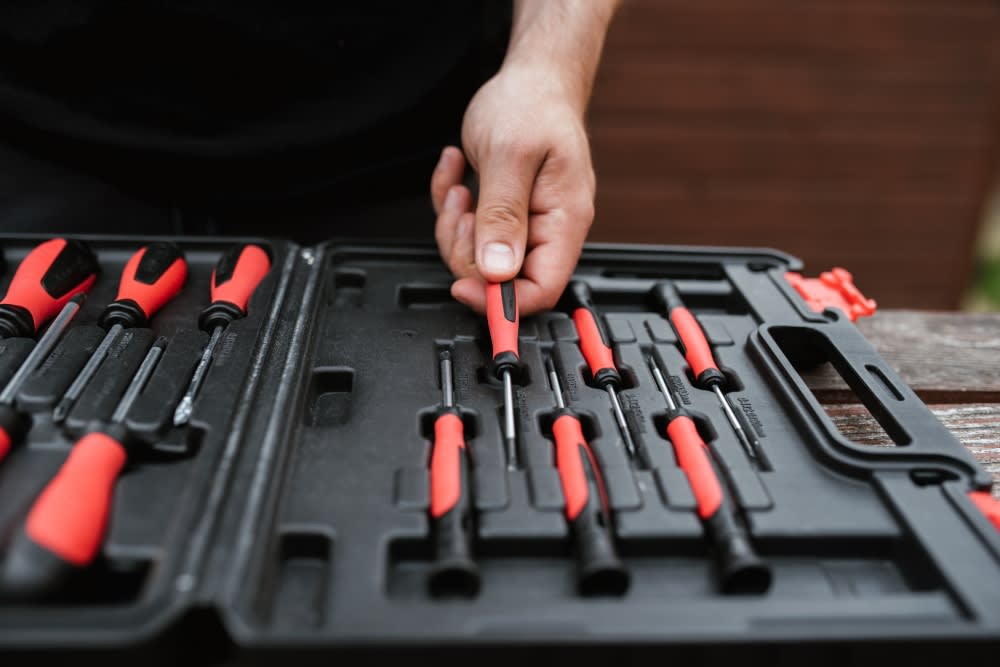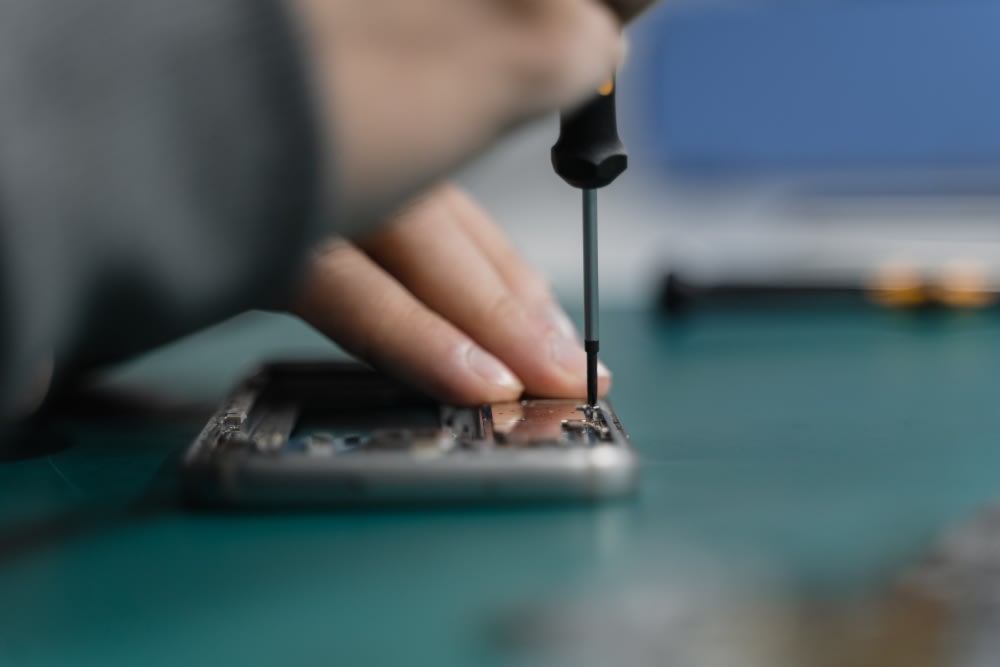- Published 5 Mar 2024
- Last Modified 6 Mar 2024
- 6 min
The Ultimate Screwdriver Guide: Types, Uses & Selection
Explore our complete screwdriver guide, covering types, uses, and how to choose the right one for every task, ensuring efficiency and precision.

Screwdrivers are indispensable tools that serve the primary purpose of driving screws into various materials, making them a necessity in both professional and personal toolboxes. Comprising three main components – the handle, shaft, and tip – a screwdriver is designed to fit into the head of a screw, providing the leverage necessary to turn it.
The handle allows for a comfortable grip, the shaft offers durability and reach, while the tip engages with the screw head, applying the necessary torque to tighten or loosen it; the turning force is crucial to a screwdriver's efficiency and effectiveness. If you’re wondering what type of screwdrivers are available, this guide is for you.

Uses and Applications of Screwdrivers
The versatility of screwdrivers makes them an essential component in any toolbox, catering to various tasks across diverse industries:
- Woodworking and carpentry
- Mechanical and industrial productions
- Metalwork projects
- Electrical equipment maintenance and installation
- Electronic device maintenance
While they are highly versatile, it is essential to note that specific types of screwdrivers are best suited for certain applications. For instance, an electrician’s toolbox should have an insulated screwdriver to protect the user, whereas a computer technician could use a smaller set of screwdrivers to fix the components.
How to Choose the Right Screwdriver
Selecting the right screwdriver for the task at hand is crucial in achieving efficiency and preventing damage to both the tool and the screw. The key lies in matching the screwdriver to the screw, ensuring a snug fit that maximises contact and reduces the risk of slippage. This compatibility is also essential in transferring the torque effectively without stripping the screw head.
Another critical consideration is the handle grip and material. These can influence the user's comfort and the tool's performance. For instance, ergonomically designed handles made from durable materials can provide a comfortable grip, reducing hand fatigue during prolonged use. The handle material should also offer sufficient friction to prevent slipping.
Equally important are the shaft length and tip size. A longer shaft can reach screws in deep or narrow spaces, while the tip size must correspond to the size of the screw head to ensure a secure fit. Choosing between magnetic and non-magnetic tips also depends on the specific requirements of the task. Magnetic tips can hold screws conveniently, enhancing precision and ease of use, especially in tight spaces.
Types of Screwdrivers

The diversity in screw designs necessitates a range of screwdriver types, each engineered to interact with specific screw heads. Understanding these variations is crucial for anyone looking to master their toolbox's capabilities. Here are the different types of screwdrivers that can be commonly found in Malaysia:
1. Phillips Screwdriver
Characterised by its cross-shaped tip, the Phillips screwdriver is designed for screws with a corresponding cross slot. This design allows for better torque transfer with less slippage, making it ideal for various applications, from household furniture assembly to automotive repairs.
2. Flathead Screwdriver
The flathead, or slotted screwdriver, features a simple flat tip that fits into a single-slot screw head. Its simplicity and versatility make it a staple in any toolbox, suitable for a wide range of tasks requiring precision and force.
3. Star Screwdriver
Also known as Torx screwdrivers, these tools are distinguished by their star-shaped tip, designed to engage with screws having a star-shaped recess. This configuration offers a higher torque transmission without damaging the screw, commonly used in automotive and electronic applications in Malaysia.
4. Torque Screwdriver
Torque screwdrivers are precision tools that allow the user to set a specific torque level, ensuring that screws are neither too tight nor too loose. This is particularly important in mechanical and electronic applications where precise tension is crucial.
5. Pozidriv Screwdriver
Similar to the Phillips but with additional lines, the Pozidriv screwdriver fits Pozidriv screws, designed to reduce cam-out and provide more torque. It is easily distinguishable by the extra radial lines on the screw head and the screwdriver tip.
6. Hex Screwdriver
Also known as an Allen wrench, the hex screwdriver is designed to fit screws with a hexagonal recess. It's widely used in the assembly of furniture, bicycles, and machinery for its ability to apply high torque with minimal slippage.
Each type of screwdriver plays a pivotal role in various applications, making it essential to choose the right one for the job to ensure efficiency and prevent damage to tools and components.
Screwdriver Sets
If you prefer having a variety of screwdriver bits in one place, consider screwdriver sets. They’re handy and ensure that you’re equipped with the right tool for the job, enhancing work efficiency and productivity. Whether it's repairing electronic devices or performing routine maintenance tasks, a screwdriver set ensures you're prepared for any scenario.
Furthermore, screwdriver sets often come in compact, organised cases, making them easy to store and transport. This organisation saves time and reduces the risk of losing individual bits. For hobbyists and professionals alike, a screwdriver set represents an investment, combining versatility, convenience, and reliability into one package.
Recommended Toolbox Setting
Equipping your toolbox with diverse screwdrivers is helpful in tackling tasks across various domains, from simple home repairs to complex industrial projects. A carefully curated selection that includes both flathead and Phillips screwdrivers in multiple sizes ensures you're prepared for any situation, providing the versatility and precision needed for efficient work.
While the flathead screwdriver stands out for its adaptability, it's important to complement it with specialised tools like Torx, hex, and Pozidriv screwdrivers available within RS Malaysia’s range of hand tools. This approach minimises the risk of damaging both the tools and the components they're used on, safeguarding the integrity of your work.